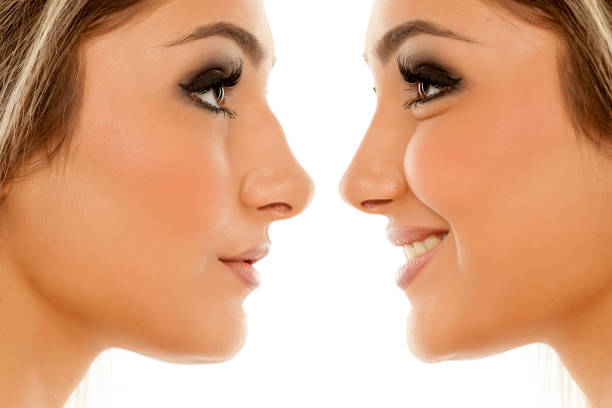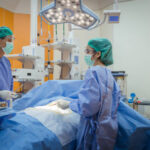Rhinoplasty, or nose surgery, has gained immense popularity in recent years, particularly in the Middle East. As a prominent cultural and aesthetic hub, Riyadh has become a focal point for those seeking to enhance their facial features through rhinoplasty. What sets rhinoplasty in Riyadh apart from other regions is its emphasis on tailoring the procedure to suit the unique characteristics and beauty standards of Middle Eastern features. This article explores how rhinoplasty is customized to align with cultural aesthetics, the importance of understanding regional facial structures, and the advancements in surgical techniques that cater specifically to the needs of patients from this diverse background.
The Cultural Context of Beauty in the Middle East
In the Middle East, beauty is often associated with specific facial features, including a well-defined nose that harmonizes with other facial proportions. For many, the ideal nose is one that enhances the overall symmetry of the face while respecting cultural and ethnic identities. In Riyadh, cultural values and societal expectations play a significant role in shaping perceptions of beauty, leading many individuals to consider rhinoplasty as a means of achieving their aesthetic ideals.
Traditionally, Middle Eastern beauty standards have favored certain nose shapes, such as slightly curved or straight noses with defined tips. Understanding these cultural preferences is crucial for surgeons in Riyadh, as it allows them to provide results that resonate with patients’ expectations while ensuring a natural and harmonious appearance. The aim is not only to enhance beauty but also to preserve individuality and cultural identity.
Understanding Middle Eastern Facial Anatomy
One of the key factors that make rhinoplasty in Riyadh unique is the emphasis on understanding the distinctive anatomical features of Middle Eastern patients. The structure of the nose in this population may differ from other ethnic groups, necessitating a tailored approach to rhinoplasty.
A. Common Nasal Characteristics
Patients of Middle Eastern descent often have specific nasal characteristics, such as:
– Prominent Nasal Hump: A slight to moderate dorsal hump is common among many individuals, which can create a desire for smoothing or reduction during surgery.
– Broader Base: A wider nasal base is another characteristic that some patients wish to refine to create a more aesthetically pleasing look.
– Acute Angles: The angle between the nose and the upper lip may also vary, influencing how surgeons approach the procedure.
Understanding these common features allows surgeons to develop a comprehensive plan that addresses individual concerns while respecting ethnic nuances. By recognizing and accommodating these anatomical traits, surgeons can achieve results that enhance beauty without compromising cultural identity.
The Role of Personalized Consultations
Personalized consultations are crucial in rhinoplasty procedures, especially in a culturally diverse city like Riyadh. Before the surgery, patients undergo thorough evaluations to discuss their aesthetic goals, medical history, and any specific concerns they may have regarding their noses.
A. Setting Realistic Expectations
During consultations, surgeons take the time to educate patients about the surgical process, what can be realistically achieved, and the potential outcomes. This open communication fosters trust and helps manage expectations, ensuring that patients feel confident in their decision to undergo the procedure.
B. Emphasizing Cultural Sensitivity
Surgeons in Riyadh are increasingly aware of the cultural sensitivities surrounding beauty standards. By engaging with patients and understanding their desires, they can create surgical plans that resonate with patients’ cultural backgrounds while promoting individuality. This patient-centered approach ensures that the results align with the patients’ vision of beauty while respecting their ethnic identity.
Advanced Surgical Techniques Tailored for Middle Eastern Features
With the growing demand for rhinoplasty in Riyadh, advancements in surgical techniques have emerged to better address the unique needs of Middle Eastern patients. These techniques focus on enhancing results while minimizing downtime and recovery.
A. Customized Surgical Approaches
Surgeons now employ a variety of surgical techniques, including open and closed rhinoplasty methods, to achieve the desired outcomes.
– Open Rhinoplasty: This technique involves making incisions on the columella, allowing surgeons greater visibility and access to the nasal structure. This approach is beneficial for addressing significant nasal deformities and refining complex features, such as a prominent dorsal hump or broad nasal base.
– Closed Rhinoplasty: For more minor adjustments, closed rhinoplasty allows for incisions inside the nostrils, resulting in less visible scarring. This method is suitable for patients seeking subtle enhancements.
Surgeons select the technique that best suits the patient’s anatomy and goals, ensuring personalized care throughout the surgical journey.
B. Emphasizing Natural Results
One of the primary objectives of rhinoplasty in Riyadh is to achieve natural-looking results that enhance the patient’s appearance without making it obvious that they have undergone surgery. Surgeons carefully consider the overall facial proportions, including the eyes, cheeks, and chin, to create a balanced and harmonious look.
By focusing on subtle enhancements rather than drastic changes, surgeons help patients feel confident about their appearance without drawing unnecessary attention to their nose. This philosophy aligns with the cultural emphasis on maintaining a sense of individuality while enhancing beauty.
The Recovery Process and Cultural Considerations
Understanding the recovery process is vital for patients considering rhinoplasty in Riyadh. The recovery phase can be influenced by cultural factors, including social expectations and the significance of certain events.
A. Managing Recovery Time
Surgeons provide detailed post-operative care instructions to facilitate a smooth recovery. In a city where social gatherings and events are commonplace, patients are often eager to return to their daily lives. Surgeons in Riyadh are well aware of this cultural aspect and aim to minimize downtime through advanced techniques that promote faster healing.
Patients are advised on how to manage swelling and bruising, which are common after rhinoplasty. Most can expect to return to work and social activities within one to two weeks, depending on the extent of the surgery. Surgeons also emphasize the importance of following post-operative care guidelines to achieve optimal results.
B. Cultural Celebrations and Timing
In Riyadh, cultural celebrations, weddings, and social events are significant aspects of life. Many patients choose to schedule their rhinoplasty procedures in advance of important occasions to ensure they feel confident and look their best. Surgeons often work with patients to align their surgery dates with upcoming events, allowing for adequate recovery time while still enabling them to participate in social activities.
Success Stories and Testimonials
The impact of tailored rhinoplasty procedures on the lives of individuals in Riyadh is evident through numerous success stories and testimonials. Many patients share their experiences of how rhinoplasty has transformed their self-image and overall well-being.
A. Empowering Personal Narratives
For instance, Fatima, a 26-year-old woman, sought rhinoplasty to address a pronounced nasal hump that had caused her distress for years. After a personalized consultation and careful planning with her surgeon, Fatima underwent the procedure and was thrilled with the results. She reported feeling more confident in her appearance and began to participate in social events that she had previously avoided. Her story reflects the transformative power of rhinoplasty in enhancing self-esteem and improving quality of life.
B. Men Seeking Aesthetic Improvements
Rhinoplasty is not limited to women; an increasing number of men in Riyadh are also seeking nasal enhancement. Ahmed, a 30-year-old professional, desired a more balanced profile that would align with his facial features. After consulting with a skilled surgeon, he underwent rhinoplasty and experienced a significant boost in his confidence. Ahmed’s story highlights how tailored rhinoplasty can cater to the aesthetic goals of all individuals, regardless of gender.
Conclusion
Rhinoplasty in Riyadh is a reflection of the cultural appreciation for beauty and individuality. By tailoring procedures to accommodate the unique characteristics of Middle Eastern features, surgeons in Riyadh have established a standard of care that respects cultural identities while enhancing aesthetic appeal. The combination of personalized consultations, advanced surgical techniques, and an understanding of regional beauty standards enables patients to achieve results that resonate with their sense of self.
As rhinoplasty continues to evolve, the emphasis on natural results and cultural sensitivity will remain at the forefront of the practice. For individuals seeking to enhance their appearance and boost their confidence, rhinoplasty in Riyadh offers a path to achieving their aesthetic dreams while embracing their unique identities.






